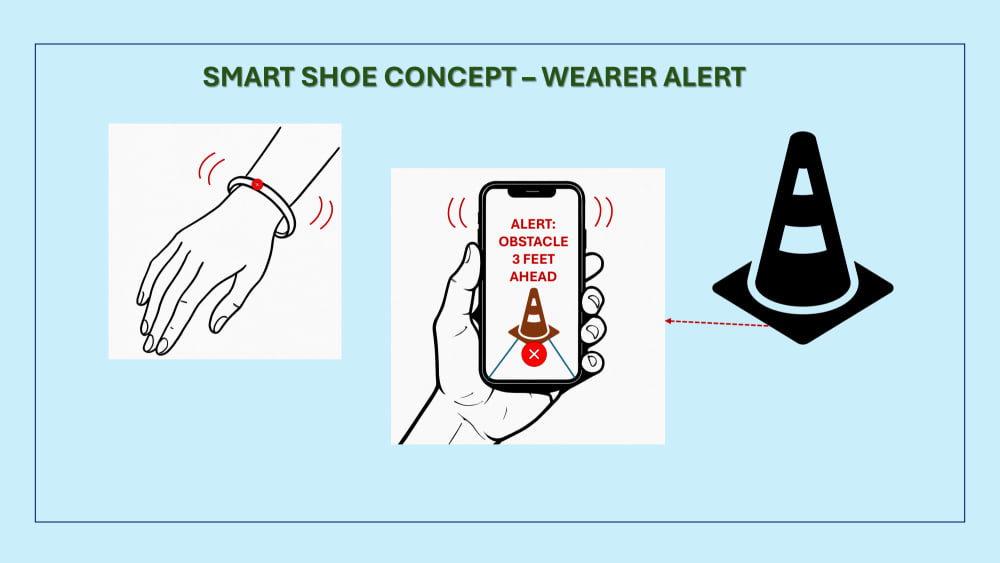Diverse groups of people, particularly the elderly, visually impaired, or individuals with balance or mobility challenges, may be prone to an increased risk of falling. It is proposed that a Smart Shoe could be developed using current state technologies. This footwear would incorporate electronics to proactively detect obstacles in real-time and provide immediate feedback to a wearer’s companion device, reducing the risk of falls and related injuries.
The design would need to integrate a system of miniature sensors embedded in the front and sides of the shoes. These sensors, including ultrasonic or infrared proximity detectors, could continuously scan the environment for objects or uneven surfaces within a predefined range. The shoes could connect wirelessly to a companion device such as a smartphone or a smart watch.
When an obstacle is detected, the system could trigger a warning mechanism to the device to alert the wearer. Feedback to the wearer could be provided in different ways – for example, visual and / or auditory alerts received via a smartphone app or a smart watch, color changes or electronic vibrations received via an electronic bracelet, auditory alerts or color changes received via smart eyeglasses or hearing aids.
An app can also allow wearers or caregivers to monitor walking patterns, configure sensitivity levels of the sensors, and receive alerts about potential risks in real time. The electronic bracelet could function as a simplified alternative for wearers who may not or prefer not to use a smartphone, and could delivering alert through lights, vibrations, or sound.
The app interface should be designed to be user-friendly, offering an easy to use user interface with features such as real time obstacle detection and visualization, step counting, location tracking via GPS, and fall history analysis. It can also notify caregivers in case of a detected fall or if the wearer deviates from a set walking route. Additionally, data could be collected and be used by healthcare professionals to assess gait stability, predict fall risks, and tailor interventions accordingly.
From a wearer’s perspective, the shoes should maintain a stylish, contemporary design and materials, ensuring users do not feel stigmatized by utilizing assistive devices. The design should ensure that the electronics are non-intrusive in terms of look and feel of the finished product. The electronics could be embedded in a lightweight, shock-absorbing sole to maintain comfort and minimize bulk. A rechargeable battery could be concealed in the heel, offering several days of operation on a single charge, with wireless charging capabilities for convenience.
In conclusion, this design concept offers wearable electronics with practical footwear to create a wearer-friendly smart system that enhances safety and mobility.
Like this entry?
-
About the Entrant
- Name:Francine Duncan
- Type of entry:individual
- Software used for this entry:Microsoft PowerPoint for illustrations; ChatGPT for assistance with entry wording and image rendering.
- Patent status:none






